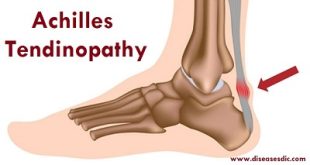Definition
Avian influenza is also called as Bird flu. Avian influenza refers to the disease caused by infection with avian (bird) influenza (flu) Type A viruses. These viruses occur naturally among wild aquatic birds worldwide and can infect domestic poultry and other bird and animal species. Avian flu viruses do not normally infect humans. However, sporadic human infections with avian flu viruses have occurred.
How Do Humans Get Bird Flu?
People catch bird flu by close contact with birds or bird droppings. Exactly what “close contact” means differs from culture to culture. People don’t catch the virus from eating fully cooked chicken or eggs. There have been a few cases where one infected person caught the bird flu virus from another person but only after close personal contact. So far, there has been no sustained human-to-human spread of H5N1.
As long as the bird flu virus doesn’t change into a human flu virus, it won’t spread far in people. But sometimes after close personal contact a person who gets bird flu does infect another person.
History of avian influenza
In the 1990s, the world’s poultry population grew 76% in developing countries and 23% in developed countries, contributing to the increased prevalence of avian influenza. Before the 1990’s, HPAI caused high mortality in poultry, but infections were sporadic and contained. Outbreaks have become more common due to the high density and frequent movement of flocks from intensive poultry production.
Influenza A/H5N1 was first isolated from a goose in China in 1996. Human infections were first reported in 1997 in Hong Kong. Since 2003, more than 700 human cases of Asian HPAI H5N1 have been reported to the WHO, primarily from 15 countries in Asia, Africa, the Pacific, Europe, and the Middle East, though over 60 countries have been affected
Epidemiology about avian influenza
The first H9N2 low-pathogenicity avian influenza virus (LPAIV) and H5N1 high-pathogenicity avian influenza virus (HPAIV) in Asia were isolated from Guangdong Province, China, in 1994 and 1996, respectively. Currently, H9 and H5 are the most prevalent AIV subtypes and can be found throughout most of the areas in China. Interestingly, the H9N2 and H5N1 AIVs are prevalent in both unvaccinated and vaccinated poultry farms, often causing sporadic outbreaks. Along with the high prevalence of H9 and H5 AIVs in poultry, novel AIVs are also emerging in China.
Causes of avian influenza
Humans can become infected and ill after coming into contact with infected birds.
The following have been linked to human illness:
- Touching or defeathering infected birds
- Touching or breathing in feces and other secretions of infected birds
- Preparing infected poultry for cooking
- Slaughtering or butchering infected poultry
- Handling birds for sale
- Attending markets selling live birds
Signs and symptoms
A person with H5N1 will develop serious symptoms. The incubation period is from 2 to 8 days, and it can take up to 17 days. This is compared with 2 to 3 days for human seasonal flu. Initial symptoms include a high fever, over 38 degrees centigrade, lower respiratory tract symptoms, and, less commonly, upper respiratory tract symptoms.
The following signs and symptoms may occur:
- a cough, usually dry
- hoarse voice
- a high fever, over 38 degrees centigrade
- a blocked or runny nose
- aching bones, joints, and muscles
- bleeding from the nose
- chest pain
- cold sweats and chills
- fatigue
- headache
- loss of appetite
- sleeping difficulties
- upset stomach, sometimes involving diarrhea
- bleeding from the gums
- bloody sputum
Some patients develop pneumonia and breathing difficulties. This occurs around 5 days after the first symptoms appear. The patient’s condition can deteriorate rapidly, resulting in pneumonia, multiple organ failure, and death.
Diagnosis
The test is called influenza A/H5 (Asian lineage) virus real-time RT-PCR primer and probe set. It can offer preliminary results in only four hours. However, the test isn’t widely available. Doctor may also perform the following tests to look for the presence of the virus that causes bird flu:
- Ascultation (a test that detects abnormal breath sounds)
- White blood cell differential
- Nasopharyngeal culture
- Chest X-ray
Additional tests can be done to assess the functioning of heart, kidneys, and liver.
Treatment and prevention
- Treatment with antiviral medication such as oseltamivir (Tamiflu) or zanamivir (Relenza) can help reduce the severity of the disease. However, the medication must be taken within 48 hours after symptoms first appear.
- The virus that causes the human form of the flu can develop resistance to the two most common forms of antiviral medications, amantadine and rimantadine (Flumadine). These medications shouldn’t be used to treat the disease.
- Unfortunately, H5N1 in humans can be a severe illness requiring hospitalization, isolation, and intensive care.
Avian flu can be prevent from the following actions:
- Open-air markets
- Contact with infected birds
- Undercooked poultry
- Vaccinations: Stay up-to-date especially with the seasonal flu and pneumococcal vaccines.
- Isolation: Those who are sick should stay away from public places and avoid contact with people, where possible.
- Coughing: Cough in to an elbow or a tissue. Carefully disposed of the tissue. If you cough into the hand and then touch some item, another person can pick up the virus from that item.
- Hand hygiene: Wash hands regularly with warm water and soap before and after using the bathroom, before and after handling food, and after coughing.
 Diseases Treatments Dictionary This is complete solution to read all diseases treatments Which covers Prevention, Causes, Symptoms, Medical Terms, Drugs, Prescription, Natural Remedies with cures and Treatments. Most of the common diseases were listed in names, split with categories.
Diseases Treatments Dictionary This is complete solution to read all diseases treatments Which covers Prevention, Causes, Symptoms, Medical Terms, Drugs, Prescription, Natural Remedies with cures and Treatments. Most of the common diseases were listed in names, split with categories.







